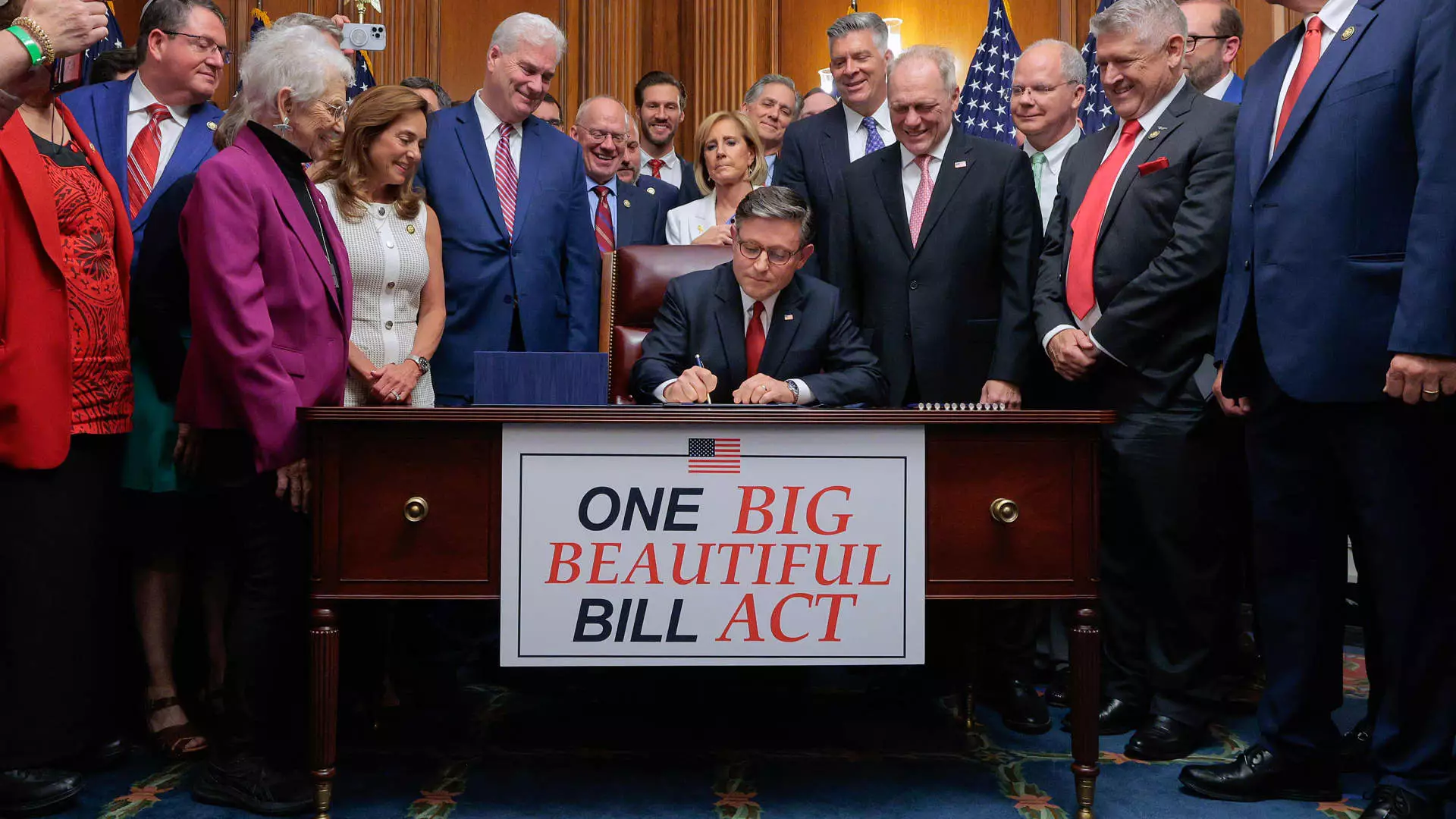In the aftermath of the so-called “big beautiful bill,” it’s increasingly clear that this legislation is not the simple boon its proponents claim it to be. While on paper it appears to bolster tax cuts for many Americans—especially the middle class—the underlying complexities and unintended consequences threaten to undermine its supposed benefits. What’s often overlooked in the political zeal and media hype is the long-term ripple effect that this law could unleash, destabilizing the very financial foundations it claims to protect.
One of the most striking aspects of this bill is its strategic manipulation of the tax code, which, on the surface, looks like a victory for working families with increased deductions and a promise of lower taxes. Yet, beneath this shiny veneer lies a treacherous landscape of hidden traps and recalibrated incentives. It’s a calculated gamble that could leave many Americans, especially those in the middle-income bracket, caught in a web of confusion, inadvertently losing out on essential benefits due to shifting parameters.
The legislative changes, especially those related to standard deductions and child benefits, seem generous at first glance. A slight increase in the standard deduction is presented as a favor to taxpayers, but it implies a transfer of equity that favors higher-income households who can maximize itemized deductions—such as SALT—at the expense of broad middle-class stability. This is a case of policy skewed to appease the wealthy and perhaps a political maneuver rather than a genuine effort to address economic disparity.
The SALT Deduction: A Toxic “Torpedo” for the Middle Class
A significant feature of this law—the temporary increase in the state and local tax (SALT) deduction to $40,000—sounds beneficial but carries a profound hidden cost. For high earners in states with steep taxes, this offers a reprieve; for the middle class, especially those earning between $200,000 and $500,000, it creates a perilous “sweet spot.” In targeting high earners, policymakers have effectively weaponized SALT as a means of tax incentivization, but at what expense for ordinary middle Americans?
The so-called “SALT torpedo,” as some experts have dubbed it, is a clever yet cruel trap. It phases out at higher income levels—between $500,000 and $600,000—causing some to face a staggering 45.5% marginal tax rate. For many, this makes earning more actually less profitable, discouraging economic growth at the very levels where innovation and productivity should be encouraged. It’s an insidious form of economic policy that benefits a small elite while penalizing the median taxpayer. If the goal was to create an equitable tax system, this approach particularly misses the mark, instead fostering frustration and economic stagnation among the very Americans it claims to support.
This “phase-out” dynamic reveals the law’s true nature: a fragile balancing act that disproportionately benefits the affluent at the expense of the middle class. The unintended consequence of such carefully crafted thresholds is a form of economic disincentive, which can stifle career advancement and discourage prudent financial planning among millions who find themselves squeezed between these layered tax brackets.
The Illusion of “Family-Friendly” Tax Cuts and Emerging Pitfalls
While political rhetoric often touts these reforms as “working family tax cuts,” the reality is far less rosy. The simple truth is that many middle-income earners are now navigating a labyrinth of new rules and limits that could easily undermine their existing financial security. For instance, the increased child benefit from $2,000 to $2,200 per child appears beneficial, but when combined with other tax provisions, the overall impact is far more complicated.
Furthermore, the legislation’s failure to extend pandemic-era enhancements to the Affordable Care Act’s (ACA) premium tax credits exposes a glaring vulnerability. The temporary boost that made health coverage more affordable is now set to expire, leaving over 22 million enrollees at risk. This looming “subsidy cliff” could turn what seemed like a faltering safety net into a costly trap, forcing families to face higher premiums in the coming years unless Congress intervenes. Such oversight reveals a troubling disconnect between tax policy and social welfare—a short-sighted approach that risks escalating healthcare costs rather than providing genuine relief.
The plan’s short-term fixes beg deeper questions about the long-term stability of the middle class in an increasingly volatile economic landscape. For many, the promise of lower taxes now comes with the ominous suspicion that future stability hinges on unpredictable legislative support—something that cannot be guaranteed amidst political turbulence. The recent legislative choices demonstrate a willingness to prioritize short-term gains over sustainable, equitable growth—a decision that could have profound repercussions for generations to come.
The Broader Impact: Are We Selling Stability for Convenience?
This law exemplifies a political strategy rooted in superficial wins—expanding deductions and offering temporary perks—while neglecting the broader economic health of everyday Americans. It’s a manifestation of a political environment that favors quick fixes and symbolic gestures over genuine structural reform. As a result, the middle class faces a future increasingly shaped by complex tax codes, diminishing benefits, and a fragile safety net.
Advisors and financial professionals are already sounding alarms about the unpredictability these changes introduce. Without nuanced income and tax planning, many Americans risk losing eligibility for benefits they might presume to qualify for, simply because they lack a comprehensive strategy to navigate these shifting parameters. The danger lies not just in the law itself but in the complacency it fosters—many will assume that their taxes are “cut and dry,” only to discover later that they have unintentionally forfeited vital advantages.
In a broader sense, this legislation signifies a crisis of confidence in the resilience of the American middle class. It reveals a paradox: legislation designed ostensibly to promote growth and fairness ends up entrenching disparities and sowing confusion. Until policymakers recognize the importance of creating a truly equitable, transparent, and sustainable tax system, everyday Americans will bear the brunt of these misguided priorities—struggling to keep pace in an increasingly complex and unequal economic landscape.

